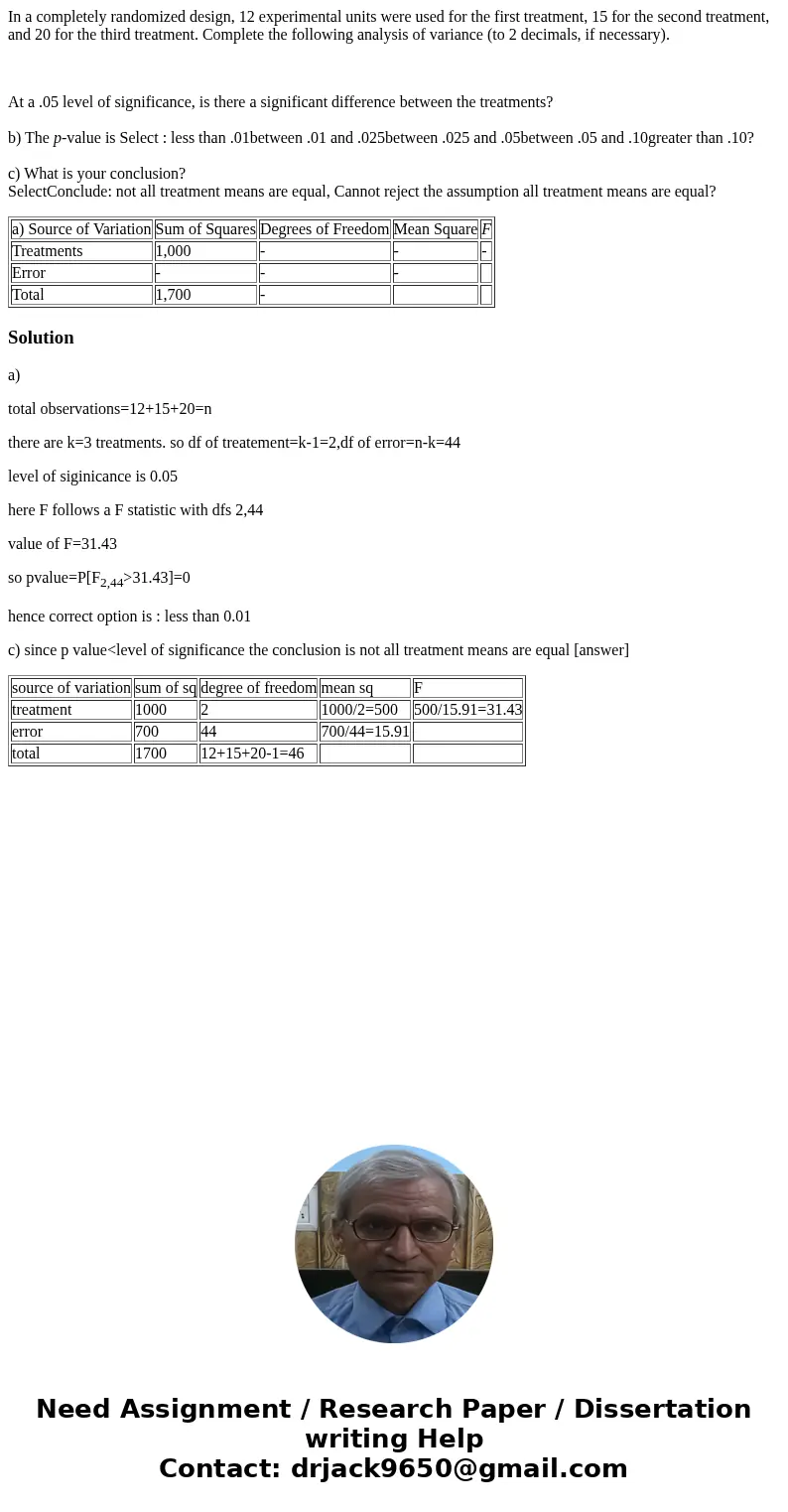In a completely randomized design 12 experimental units were
In a completely randomized design, 12 experimental units were used for the first treatment, 15 for the second treatment, and 20 for the third treatment. Complete the following analysis of variance (to 2 decimals, if necessary).
At a .05 level of significance, is there a significant difference between the treatments?
b) The p-value is Select : less than .01between .01 and .025between .025 and .05between .05 and .10greater than .10?
c) What is your conclusion?
SelectConclude: not all treatment means are equal, Cannot reject the assumption all treatment means are equal?
| a) Source of Variation | Sum of Squares | Degrees of Freedom | Mean Square | F |
| Treatments | 1,000 | - | - | - |
| Error | - | - | - | |
| Total | 1,700 | - |
Solution
a)
total observations=12+15+20=n
there are k=3 treatments. so df of treatement=k-1=2,df of error=n-k=44
level of siginicance is 0.05
here F follows a F statistic with dfs 2,44
value of F=31.43
so pvalue=P[F2,44>31.43]=0
hence correct option is : less than 0.01
c) since p value<level of significance the conclusion is not all treatment means are equal [answer]
| source of variation | sum of sq | degree of freedom | mean sq | F |
| treatment | 1000 | 2 | 1000/2=500 | 500/15.91=31.43 |
| error | 700 | 44 | 700/44=15.91 | |
| total | 1700 | 12+15+20-1=46 |

 Homework Sourse
Homework Sourse